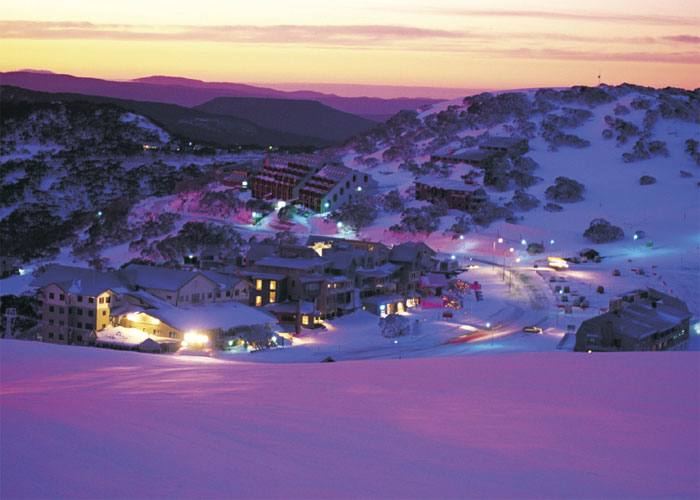

[MOUNT HOTHAM AT SUNSET, ALPINE NATIONAL PARK]
VICTORIA is possibly Australia’s most diverse state. In a half-hour drive from Melbourne you could be taking in mist-laden mountain ranges and fern gullies. In an hour you could be lying on a sandy beach in a sheltered bay, or surfing in the rugged Southern Ocean. In around four hours you could be standing on the edge of the immense desert that stretches away into Australia’s interior. In a country full of mind-numbing distances, nothing seems far away in Victoria.
More than five million people live in Victoria, with over four million in Melbourne. The city was only founded in 1835, as a kind of afterthought to Sydney and Hobart, but by the 1850s Victoria was off to a racing start. A deluge of people from all corners of the world fanned out across the state in response to the madness that was gold. It brought prosperity to Victoria and it also brought the certain wildness treasured in the state’s history – uprisings like the Eureka Rebellion and bushrangers like Ned Kelly.
Two centuries later, Victoria has also recognised the richness of its natural landscape. To the west of Melbourne, beyond Geelong, a tract of cool-temperate rainforest unravels on its way to the vivid green Cape Otway, where a lighthouse stands on the cliff-top. The Great Ocean Road winds past here, en route to the state’s iconic limestone stacks, the Twelve Apostles.
On the other side of Melbourne, the land falls away into a series of peninsulas, islands and isthmuses. One leads to Wilsons Promontory, an untouched landscape of forested hills, tea-brown rivers and beaches strewn with enormous rust-red boulders.
The amber-hued Yarra Valley produces some of the country’s finest cool-climate wines, and from here the landscape begins its gradual climb up into the High Country, which becomes a vista of snowfields in winter.
Perhaps Victoria’s most cherished place is the Grampians, an offshoot of the Great Dividing Range. With a quarter of the state’s flora and 80 per cent of its Aboriginal rock art, the Grampians is a living gallery and a superb place for bushwalking and camping.
![]()
Population 5 624 100
Total land area 227 010 square kilometres
People per square kilometre 22.1
Sheep per square kilometre 94
Length of coastline 1868 kilometres
Number of islands 184
Longest river Goulburn River (566 kilometres)
Largest lake Lake Corangamite (209 square kilometres)
Highest mountain Mount Bogong (1986 metres), Alpine National Park
Hottest place Mildura (77 days per year above 30°C)
Wettest place Weeaproinah (1900 millimetres of rain per year), Otway Ranges
Oldest permanent settlement Portland (1834)
Most famous beach Bells Beach, Torquay
Tonnes of gold mined 2500 (2 per cent of world total)
Litres of milk produced on Victorian dairy farms per year 7 billion
Quirkiest festival Great Vanilla Slice Triumph, Ouyen
Famous locals Germaine Greer, Barry Humphries Kylie Minogue
Original name for the Twelve
Apostles The Sow and Piglets
Best invention Bionic ear
First Ned Kelly film released The Story of the Kelly Gang, 1906 (also believed to be the world’s first feature film)
Local beer Victoria Bitter